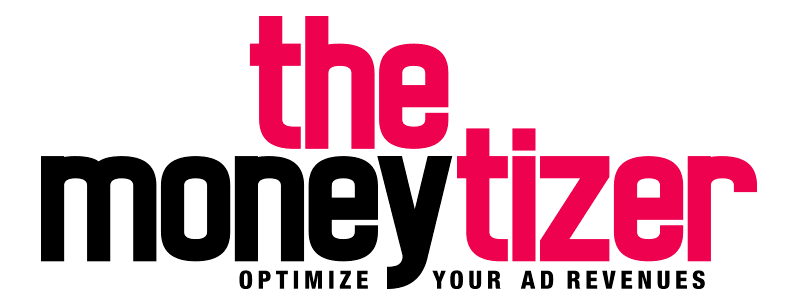Did you know that a few years ago online advertising was more complex? Buying and selling ad spaces between advertisers and publishers could take up to a couple of weeks. Traveling to meet in real life, phone canvassing… It seems like ages ago when you look at the current situation and the technologic means that we now have to help the concretisation of transactions. Fortunately, automated processes facilitate exchanges, when it used to take so long.
Getting a better understanding of the increased presence of ad units online is a real challenge for publishers. As a result, resorting to programmatic is an obvious choice for advertisers to process the high volume of data for targeting purposes.
That is where the tools dedicated to the management of ad units come into play: SSP and DSP. They have to be understood as platforms to optimize advertising spaces.
Publishers are therefore able to sell their ad spaces using programmatic. This refers to a process defined by targeting and optimization algorithms in order to propose the buyer’s offer automatically on a marketplace.
DSP, SSP, Ad Exchange… In this article, we will give you an overview of the major players in programmatic advertising as well as how they interact. They represent part of the technology of the ad space ecosystem and work in conjunction with each other. Online advertising won’t have any secret for you.
The real-time bidding (RTB)
These are auctions where advertising impressions are bought and sold through transactions that take only a thousandth of a second to complete. RTB is often referred to as programmatic but don’t get it wrong, they are not the same thing. Programmatic automates the media buying decision process, targeting specific audiences and demographics. RTB is the technique that represents the way in which advertising spaces are bought and sold on a per impression bidding basis.
Understanding RTB
Here are the terms which illustrate the field of programmatic:
· SSP (Supply Side Platform)
· DSP (Demand Side Supply)
· Ad Exchange
What is a SSP (Supply Side Platform)?
This Supply Side Platform helps publishers to monetize their ad spaces or applications. Publishers can offer their ad spaces and define their controls to increase the revenues of their impressions on all demand sources. In that, we include the definition of minimal price levels, rules for the advertisers, accepted categories, types of ads…
A SSP enables publishers to sell their ad inventory on various ad exchanges. Therefore, publishers have the insurance of receiving the best possible offer and maximize their revenues.
The majority of deals are concluded in premium via RTB on virtual markets. The sellers’ interests are optimized by the SSPs and the buyers’ by DSPs. The other platforms involved in this automated ecosystem regulate and finalize the transactions: they are called Ad Exchanges.
An SSP can issue a proposal for a contextualized media buy or a number of impressions delivered per unit depending on the targeting. The transaction can begin the moment the user clicks to connect and conclude before the page is displayed. Here is an example of the best SSPs:
· Rubicon;
· Adform;
· Pubmatic.
Publishers distribute their offers to DSPs and Ad Exchanges to monetize the sale of their advertising space. The algorithms analyze the publishers’ data (rates, visitor profiles, formats…), verify them, compare them to the advertisers’ needs and propose the bid.
What is a DSP (Demand Supply Platform)?
A DSP is a platform on which advertisers or media traders can buy ad spaces on various Ad Exchanges. The spaces are gathered in one place for more efficiency.
Brands can use DSPs to set up their campaigns and define their maximal auction conditions, the maximum budgets, the parameters of the target audience and the campaign objectives. DSPs differ in the number of partnerships and the technology used to execute the purchase.
DSPs are used by advertisers to purchase ad impressions from Ad Exchanges in the most cost-effective manner.
What are the advantages of a DSP?
· Unique platform to launch and manage the campaigns;
· Access to thousands of ad spaces;
· Capacità di targeting;
· Real-time information;
· Access to metrics to analyze the campaigns’ performances;
· Efficient budgeting.
What is an Ad Exchange?
It is an online marketplace for buying and selling advertising space. Sellers offer their advertising inventory and buyers bid for it.
The Ad Exchange provides publishers and advertisers with access to real-time bidding. Advertisers buy advertising space and publishers acquire it at competitive prices, thus maximizing their revenues.
Ad Exchange enables SSPs and DSPs to connect to each other.
It is regularly used to sell display, video and mobile ad inventory.
It’s important to remember that publishers and advertisers operate on opposite sides of a transaction.
What is a DMP?
The DMP processes the data. Advertisers use all kinds of data to make sure their campaigns are relevant to consumers.
The DMP stores data so publishers and brands can use it and launch their campaigns to sell to a specific target.
What is the difference between a SSP and an Ad Exchange?
Publishers use SSPs to connect various Ad Exchanges in order to offer their inventory to the highest number of potential buyers. They are hoping to increase competition and therefore, sell at a higher price.
Ad Exchanges are virtual marketplaces where publishers and advertisers exchange digital advertising inventories. For publishers, there are sales places and for advertisers, marketplaces. The Ad Exchange simply acts as an intermediary to facilitate transactions.
What do Ad Networks do?
An Ad Network is a technology platform that serves as a broker between a group of publishers and a group of advertisers. It aggregates publishers’ unsold inventory and offers advertisers a consolidated, lower-cost impression package on a CPM basis.
What is the difference between an Ad Network and a DSP?
An Ad Network aggregates inventory from multiple publishers and sells it as a package to advertisers, while DSPs buy ad inventory on an impression-by-impression basis through real-time auctions.
What is the role of the IAB (Interactive Advertising Bureau)?
The Interactive Advertising Bureau represents the online advertising industry in its environment and aims to generate value for all stakeholders.
The IAB’s goal is to:
· Standardize the market of online advertisement;
· Provide a set of standards to ensure that different advertising technologies can communicate effectively and transparently with each other;
· Display ads in the appropriate format.
And how about The Moneytizer?
Our programmatic monetization platform offers publishers an all-in-one header bidding solution. We are connected to more than 50 SSPs all over the world.
We guarantee our publishers to position their audience in a programmatic marketplace, where supply and demand meet, and by adding competition to aim for the highest price. As a result, we increase the monetization of our sites and the overall performance of our clients.
We can mention the notion of programmatic display in an increasingly automated and personalized marketing process. Indeed, the ecosystem of online advertising through the use of technology platforms is still in its infancy and The Moneytizer intends to play a leading role.

